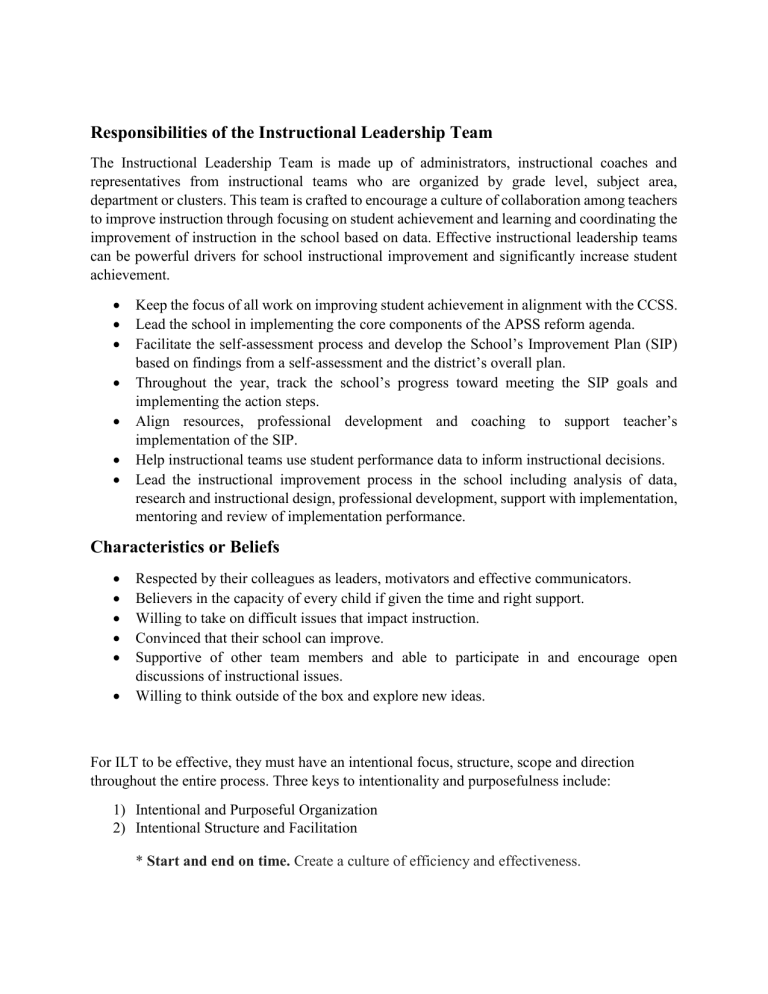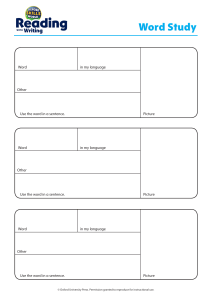
Responsibilities of the Instructional Leadership Team The Instructional Leadership Team is made up of administrators, instructional coaches and representatives from instructional teams who are organized by grade level, subject area, department or clusters. This team is crafted to encourage a culture of collaboration among teachers to improve instruction through focusing on student achievement and learning and coordinating the improvement of instruction in the school based on data. Effective instructional leadership teams can be powerful drivers for school instructional improvement and significantly increase student achievement. Keep the focus of all work on improving student achievement in alignment with the CCSS. Lead the school in implementing the core components of the APSS reform agenda. Facilitate the self-assessment process and develop the School’s Improvement Plan (SIP) based on findings from a self-assessment and the district’s overall plan. Throughout the year, track the school’s progress toward meeting the SIP goals and implementing the action steps. Align resources, professional development and coaching to support teacher’s implementation of the SIP. Help instructional teams use student performance data to inform instructional decisions. Lead the instructional improvement process in the school including analysis of data, research and instructional design, professional development, support with implementation, mentoring and review of implementation performance. Characteristics or Beliefs Respected by their colleagues as leaders, motivators and effective communicators. Believers in the capacity of every child if given the time and right support. Willing to take on difficult issues that impact instruction. Convinced that their school can improve. Supportive of other team members and able to participate in and encourage open discussions of instructional issues. Willing to think outside of the box and explore new ideas. For ILT to be effective, they must have an intentional focus, structure, scope and direction throughout the entire process. Three keys to intentionality and purposefulness include: 1) Intentional and Purposeful Organization 2) Intentional Structure and Facilitation * Start and end on time. Create a culture of efficiency and effectiveness. * Use personal/professional experiences. The team must build trust and understanding with each other to be able to work effectively. * Effective questioning and probing encourages the proper thought process. This helps to push through or pressure test solutions. * Confront issues and address challenges. Meetings should be about solving problems of practice. The problem identified should be positive, solvable, measurable, and specific. * Engage all instructional team members. This encourages diversity of thought. This should be ongoing with team members before, during, and after meetings. * Give context and examples. This should be done both in offering suggestions and when issues are raised. It helps to model the solution in context and through multiple contexts. * Purpose. We must have a specific purpose and stick to this agenda, but also remember the human aspect of the work. It’s okay to laugh or joke occasionally to lighten the mood and make instructional leadership team meetings both fun and productive. 3) Intentional Support




